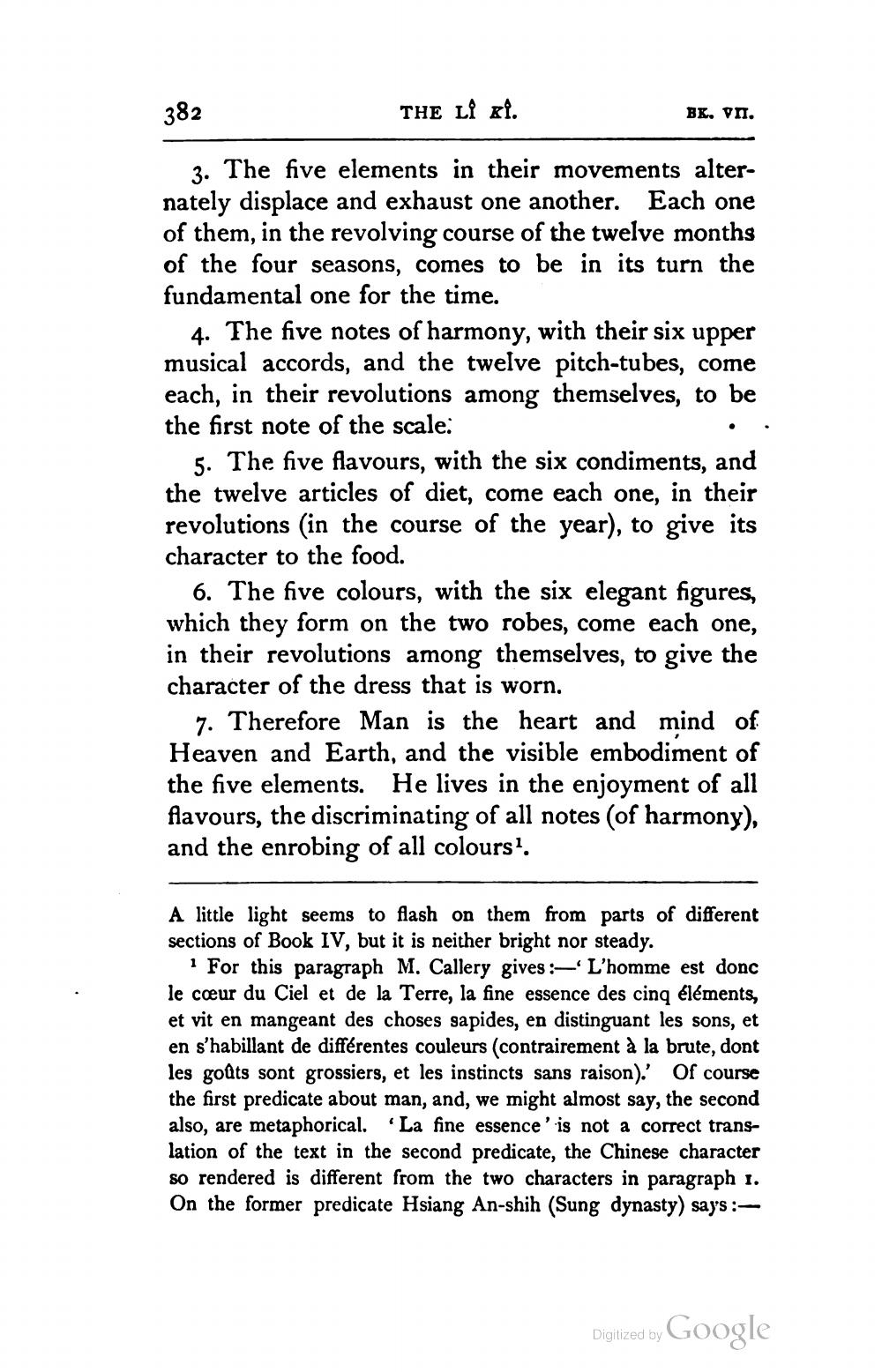________________
382
THE LÎ xi.
BX, VIT.
3. The five elements in their movements alternately displace and exhaust one another. Each one of them, in the revolving course of the twelve months of the four seasons, comes to be in its turn the fundamental one for the time.
4. The five notes of harmony, with their six upper musical accords, and the twelve pitch-tubes, come each, in their revolutions among themselves, to be the first note of the scale:
5. The five flavours, with the six condiments, and the twelve articles of diet, come each one, in their revolutions (in the course of the year), to give its character to the food.
6. The five colours, with the six elegant figures, which they form on the two robes, come each one, in their revolutions among themselves, to give the character of the dress that is worn.
7. Therefore Man is the heart and mind of Heaven and Earth, and the visible embodiment of the five elements. He lives in the enjoyment of all flavours, the discriminating of all notes (of harmony), and the enrobing of all colours.
A little light seems to flash on them from parts of different sections of Book IV, but it is neither bright nor steady.
For this paragraph M. Callery gives :- L'homme est donc le coeur du Ciel et de la Terre, la fine essence des cinq éléments, et vit en mangeant des choses sapides, en distinguant les sons, et en s'habillant de différentes couleurs (contrairement à la brute, dont les goûts sont grossiers, et les instincts sans raison). Of course the first predicate about man, and, we might almost say, the second also, are metaphorical. La fine essence'is not a correct translation of the text in the second predicate, the Chinese character so rendered is different from the two characters in paragraph 1. On the former predicate Hsiang An-shih (Sung dynasty) says :
Digitized by Google




